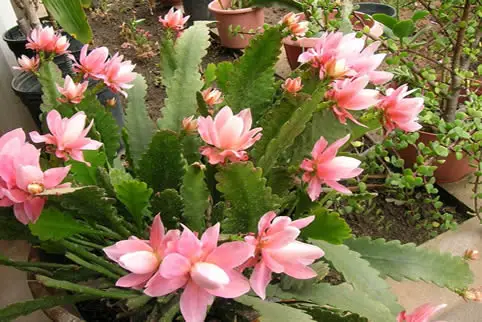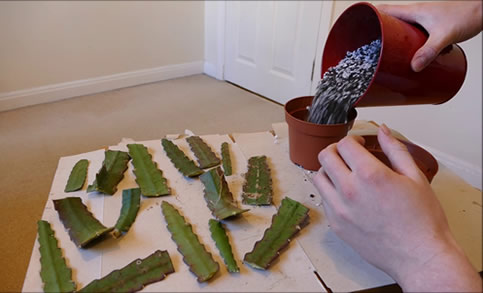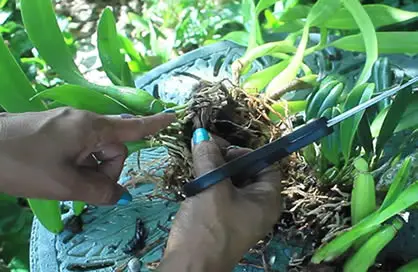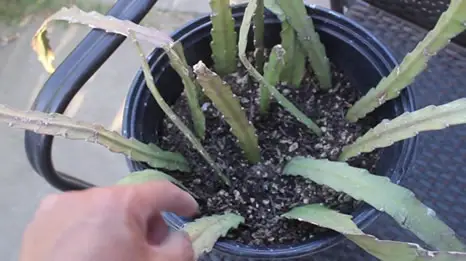How to Propagate Orchid Cactus (Epiphyllum): Simple Methods for More Blooms

Orchid cacti (Epiphyllums) are beloved for their stunning, oversized blooms and unique flat stems—but what makes them even better is how easy they are to propagate. Whether you want to expand your collection or share with friends, there are several ways to multiply your Epiphyllums with ease.
Table of Contents
- Why Epiphyllum Propagation Is So Rewarding
- Stem Cuttings: The Fastest and Easiest Method
- Division: Best for Large, Established Plants
- Water Propagation (Optional for Cuttings)
- Seed Propagation (Not Recommended for Most)
- Outdoor Propagation Tips
- Common Issues and How to Avoid Them
- Popular Epiphyllum Varieties for Propagation
- Final Thoughts
Why Epiphyllum Propagation Is So Rewarding
Native to tropical forests of Central and South America, orchid cacti grow as epiphytes—clinging to trees rather than soil.
This natural tendency makes them excellent candidates for propagation, especially by stem cuttings.

They grow quickly, root easily, and reward your efforts with spectacular flowers in the right conditions.
These propagation methods apply to all popular Epiphyllum varieties, including Queen of the Night, German Empress, Pink Pride, King Midas, Frühlingsgold, Deutsche Kaiserin, Clown, and Padre.
Stem Cuttings: The Fastest and Easiest Method
Propagating orchid cactus by stem cuttings is by far the most common and successful method.

-
Choose a healthy segment: Select a mature, firm stem segment that’s at least 4–6 inches long.
-
Let it callous: Place the cutting in a dry, shaded area for 5–7 days so the cut end can scab over.
-
Prepare your pot: Fill a small container with moist, well-draining cactus mix or an epiphyte-friendly blend (such as cactus soil mixed with orchid bark or perlite).
-
Plant the cutting: Insert the calloused end about 1–2 inches deep. Keep it upright.
-
Water sparingly: Mist lightly at first, then water only when the top inch of soil is dry.
Roots typically form within 2–6 weeks. You’ll know it’s working when you see new growth emerging from the stem.
Division: Best for Large, Established Plants
If your orchid cactus has grown large or formed multiple clumps, you can divide it for quick propagation.

-
Remove from the pot: Gently take the plant out and shake off excess soil.
-
Separate natural clumps: Use your hands or a clean knife to divide it into sections, making sure each has stems and a healthy root mass.
-
Replant each section: Place in fresh, well-draining soil and water lightly after a few days.
Division is great for rejuvenating overgrown plants while multiplying them at the same time.
Water Propagation (Optional for Cuttings)
Stem segments can also be rooted in water, although it’s not the most common method.

-
Place cutting in water: Submerge just the bottom inch of the cutting in a glass or jar of clean water.
-
Keep the water fresh: Change it every few days to avoid bacteria buildup.
-
Add light but no direct sun: A bright, warm spot is best.
Bonus Tip: Add a few drops of diluted, succulent-safe fertilizer (like a 2-7-7 mix) to the water once a week to encourage early root growth.
Once roots reach about an inch long, pot the cutting in soil and care for it as usual.
Seed Propagation (Not Recommended for Most)
While orchid cactus can technically be grown from seed, it’s a slow and unreliable process.
-
Collect seeds from ripe fruit: After blooming, flowers may produce fruit with seeds.
-
Sow on the surface: Sprinkle onto a moist, well-draining mix.
-
Provide humidity: Cover with plastic wrap or a humidity dome.
-
Wait and wait: Germination may take weeks to months, and seedlings can take years to mature.
Most growers skip this method unless hybridizing or breeding specific cultivars.
Outdoor Propagation Tips
In warm, humid climates (zones 10–11), orchid cacti can be propagated outdoors:

-
Keep cuttings in dappled shade.
-
Use hanging baskets or tree-mounted slats to mimic their natural habitat.
-
Avoid soggy soil—raise containers or use wall planters to improve airflow and drainage.
Wait until nighttime temperatures are consistently above 60°F (15°C) before starting outdoor propagation.
Common Issues and How to Avoid Them
Cuttings rot before rooting: Usually due to planting before callousing. Let them dry properly first.
No roots after several weeks: The soil may be too wet or too dry. Adjust moisture and check light exposure.
Shriveled cuttings: Lack of water or too much sun. Mist lightly or move to a cooler spot.
Fungus or mold: Ensure proper airflow and don’t enclose cuttings in too much humidity.
Popular Epiphyllum Varieties for Propagation
Some Epiphyllum cultivars are especially popular for their incredible flowers and ease of propagation:
-
Queen of the Night (Epiphyllum oxypetalum): Iconic white, night-blooming flowers with sweet fragrance.
-
German Empress (Epiphyllum ackermannii): Bright red blooms, fast grower, and extremely easy to root.
-
Pink Pride: Flashy pink flowers with wide petals.
-
King Midas: Brilliant yellow blooms that add bold contrast to green trailing stems.
-
Frühlingsgold: Large, golden-orange blooms—loved for both size and color.
-
Deutsche Kaiserin: Produces rich red flowers; a favorite among Pinterest collectors.
-
Clown: Uniquely multicolored blooms in shades of pink, red, and white.
-
Padre: Deep purple flowers and an elegant, trailing growth habit.
All of these can be propagated using stem cuttings, and some—like German Empress—root especially fast.
Final Thoughts
Propagating orchid cactus is a joyful, rewarding process that gives you more of what you love—lush stems and show-stopping blooms.
With a few cuttings and the right environment, you can easily grow an entire collection of these dazzling epiphytes.
So go ahead—snip, root, and multiply your orchid cactus garden into a blooming masterpiece. And be sure to read our guide Orchid Cactus Care: A Guide to Growing Epiphyllum Indoors and Out so you can grow a healthy long-living succulent.
Thanks for reading! I'm Michael — houseplant fanatic and your Pinterest plant guide.
Follow me on Pinterest for fresh updates 🌿



